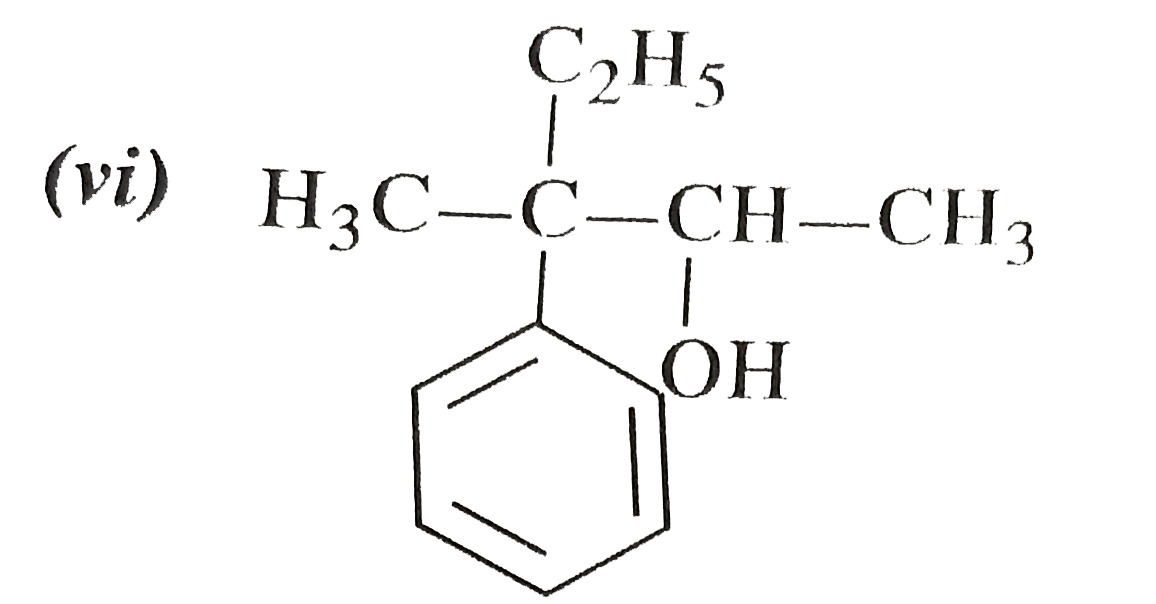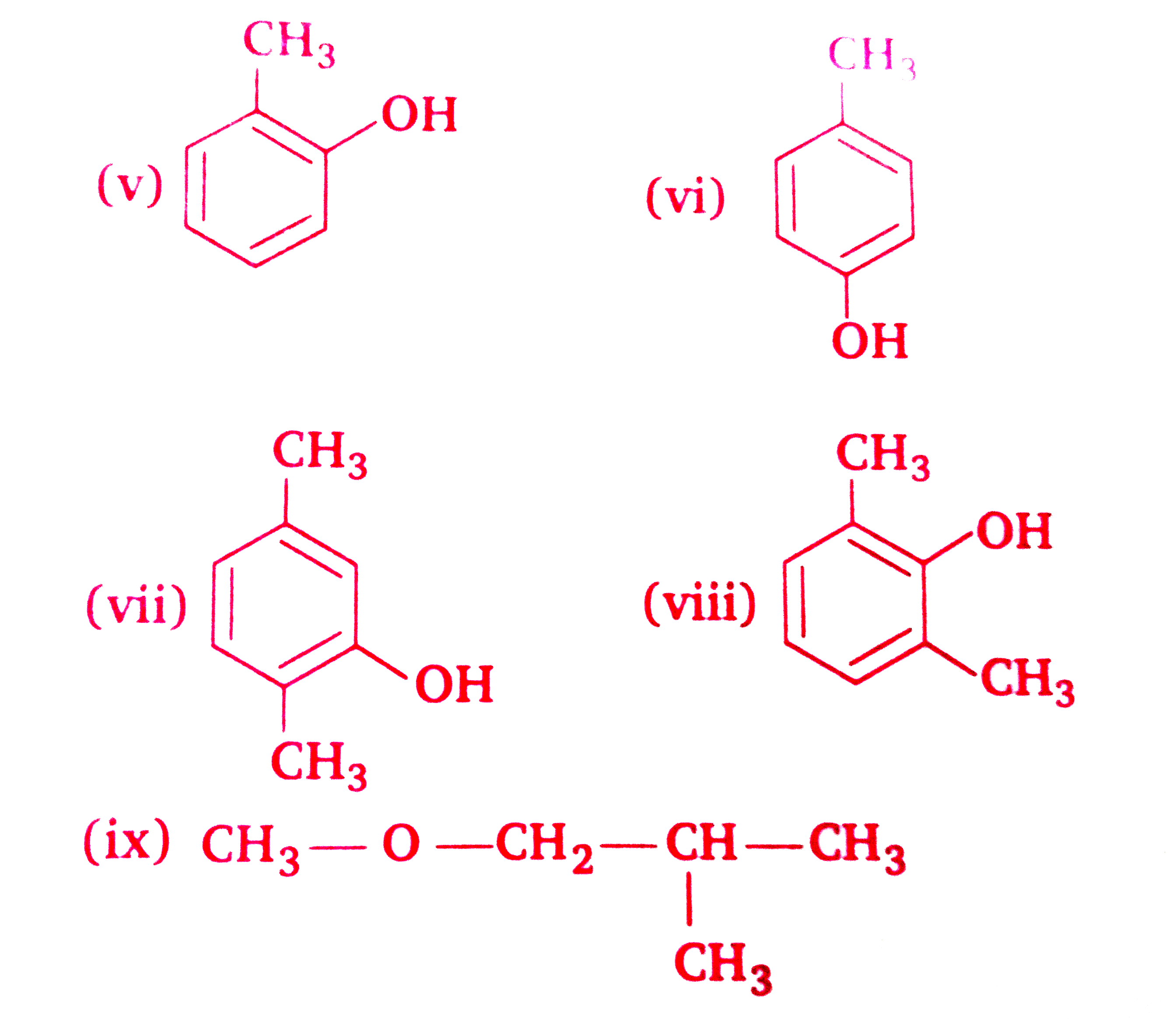Give the Grignard reagent and carbonyl compound that can be used to prepare
(a) CH3CH2CH2OH
(b) (CH3)2C(OH)CH2CH2CH3
(c ) C6H5CH2CH(OH)CH3
(d) C6H5 |CH3CH2−C−CH3 | C5H5Solution in Bengali
Step by step video & image solution for Give the Grignard reagent and carbonyl compound that can be used to prepare (a) CH_(3)CH_(2)CH_(2)OH (b) (CH_(3))_(2)C(OH)CH_(2)CH_(2)CH_(3) (c ) C_(6)H_(5)CH_(2)CH(OH)CH_(3) (d) {:(" "C_(6)H_(5)),(" |"),(CH_(3)CH_(2)-C-CH_(3)),(" |"),(" "C_(5)H_(5)):} by Chemistry experts to help you in doubts & scoring excellent marks in Class 12 exams.
Updated on:21/07/2023Topper's Solved these Questions
- HYDROXY DERIVATIVESBOOK - NCERT BANGLISHCHAPTER - HYDROXY DERIVATIVESEXERCISE - GLYCOLS & GLYCEROLS
3 Videos
- HYDROXY DERIVATIVESBOOK - NCERT BANGLISHCHAPTER - HYDROXY DERIVATIVESEXERCISE - Phenols
10 Videos
- HYDROXY DERIVATIVESBOOK - NCERT BANGLISHCHAPTER - HYDROXY DERIVATIVESEXERCISE - PRACTICE
3 Videos
- F-BLOCK ELEMENTS BOOK - NCERT BANGLISHCHAPTER - F-BLOCK ELEMENTS EXERCISE - SELF EVALUATION ( ANSWER NOT EXCEEDING 60 WORDS)
4 Videos
- ISOMERISM IN ORGANIC CHEMISTRYBOOK - NCERT BANGLISHCHAPTER - ISOMERISM IN ORGANIC CHEMISTRYEXERCISE - SELF EVALUATION (CONFORMATION(Short answer questions.))
2 Videos
Similar Questions
How can the following conversion be effected ?
(i) glycerol → acrolein
(ii) glycol → dioxan
(iii) oxalic acid → formic acid
View SolutionHow can the following be obtained ?
(a) phenol from benzene diazonium chloride
(b) 2, 4, 6-tribromo phenol from phenol
View SolutionWrite the IUPAC names of (i) CH3OCH2CH2OH (ii) CH3OCH2OCH3 and (iii)

View SolutionAccount for the following.
(i) +3 oxidation state of lanthanides is the most stable.
(ii) A few 4f elements show +2 or +4 oxidation states in addition to the characteristic oxidation state of +3.
(iii) Lanthanides are grouped together.
View SolutionDistinguish enantiomers and diasteromers ?
View SolutionArrange the following compounds in the increasing order of their boiling points:
CH3CH2CH2CHO,CH3CH2CH2CH2OH,H5C2−O−C2H5,CH3CH2CH2CH3
View SolutionGive the IUPAC names of the following compounds:
(i)C6H5−CH2−CH2−OH (ii)CH3−CH3∣C∣CH3−CH2−CH2−OH
(iii)[(CH3)2CH]3COH. (iv)CH3−CH∣OH−CH2−CH2−O−CH2CH3
(v)CH3−CH2−CH∣Cl−CH∣CH3−CH3∣C∣OH−CH3 (vi)
(vii)(CH3)3COH (viii)CH3−CH∣CH3−CH∣OH−CH2−CH∣CH3−CH3
(ix) CH2OH |CH2−CH2−CH−CH−CH−CH3 | | CH2Cl CH3, (x) CH3−C=C−CH2OH | | CH3Br
(xi) CH2=CH−CH∣OH−CH2−CH3, (xii) CH2OH |CH3−CH−CH2−CH−CH−CH3 | | CH3 OH
View SolutionAmongest the following maximum number of compounds which give iodoform test are
CH3CONH2,CH3COCl,CHCOOH,(CH3CO)2
C6H5COCH3,C6H5CH2CHO,
C6H5(OH)CH3
C6H5CH2CH2OH,(CH3)2C=CHCOCH3
CH3COCH2COOC2H5
View SolutionAmong the following the number of alcohols showing iodoform test is. CH_(3)OH,CH_(3)CH_(2)OH,(CH_(3))_(2)CHOH,(CH_(3))_(3)C-OH,CH_(3)CH_(2)CH_(2)CH_(2)OH,CH_(3)CHOHCH_(2)CH_(3),CH_(3)CH_(2)CH_(2)OH,(C_(2)H_(5))_(2)CHOH,CH_(3)CHOHCH(CH_(3))_(2)
View Solutionनिम्नलिहित यौगिकों को कवथनांकों के बढ़ते कर्म में व्यवस्थित कीजिए -
CH3CH2CH2CHO,CH3CH2CH2CH2CH2OH,H5C2−O−C2H5,CH3CH2CH2CH3
View Solutionनिम्न यौगकों के IUPAC नाम लिखिये-
(i) CH3 |CH3−CH−CH−C−CH3 | | | CH3 OH CH3
(ii) H3C−CH−CH2−CH−CH−CH3 | | | OH OH C2H5
(iii) CH3−CH−CH−CH3 | | OH OH
(iv) HO−CH2−CH−CH2−OH | OH

(x) C6H5−O−C2H5
(xi) C6H5−O−C7H15(n−)
(xii) CH3−CH2−O−CH−CH2−CH3 | CH3
View SolutionAssign the priority order number to the following atoms or groups: (a) -OH,-CH_(2)OH, -CHO,-H (b) -CHO,-CH_(2)OH,-CH_(3),-OH (c ) C_(6)H_(6)-,-CH(CH_(3))_(2),-H,-NH_(2) (d) -CH(CH_(3))_(2),-CH=CH_(2),-C-=CH,C_(6)H_(5)- (e) -CH_(3),-CH_(2)Br,-CH_(2)OH,-CH_(2)Cl (f) -OCH_(3),-N(CH_(3))_(2),-CH_(3),-H (g) -CH=CH_(2),-CH_(3),C_(6)H_(5)-,-CH_(2)CH_(3) (h) (CH_(3))_(2)CH-,-Cl,-CH_(2)CH_(2)CH_(2)Br-CH_(2)CH_(2)Br (i) -Cl,-Br,-I,-NH_(2)
View SolutionGive the IUPAC name of each of the following and classify them as 1∘,2∘ and 3∘
(a) CH3(CH2)3CHOHCH(CH3)2 ,
(b) (CH3)3C−CH2OH
( c) (CH3)2C−C∣C6H5−OH
(d) BrCH3−C∣OHH2−CH−C(CH3)3
(e) CH2=CH−CHOHCH
(f) PhCH2OH
(g) HOCH2CH2CH2CH2C6H5
(h) (C2H5)2COH
View SolutionGive the Grignard reagent and carbonyl compound that can be used to prepare
(a) CH3−CH2−CH2−OH
(b) (CH3)2C(OH)CH2CH2CH3
( c) C6H5CH2CH(OH)CH3
(d) CH3−CH2−C6H5∣C∣C6H5−CH3
View SolutionThe compound that reacts with NaOH . (A) CH_(3)OH (B) CH_(3)CH_(2)OH (C) C_(6)H_(5)OH (D) C_(6)H_(5)CH_(2)OH
View Solution
